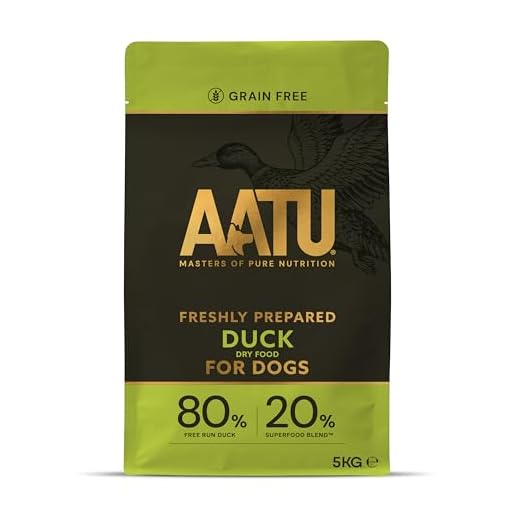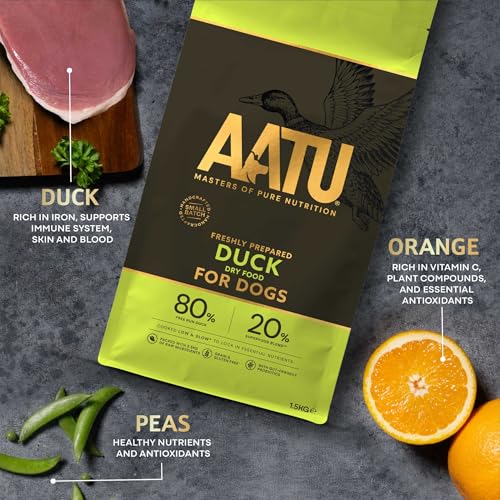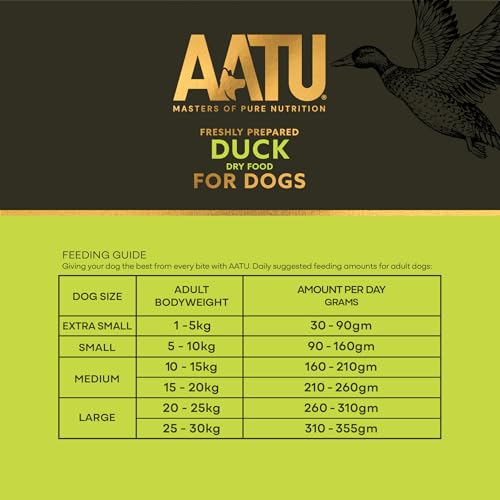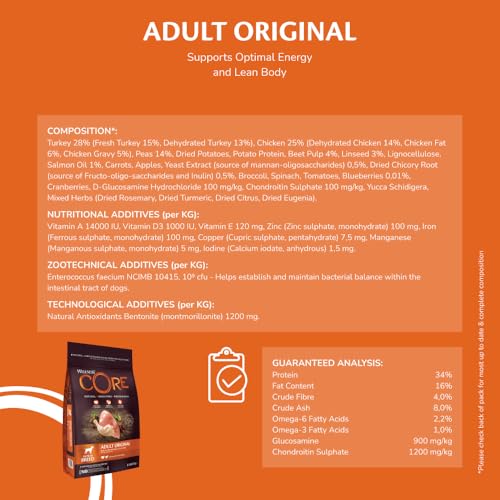




When your dog is in heat, her nutritional needs can change, affecting her overall health and well-being. As a responsible pet owner, I understand the importance of providing the right diet during this sensitive time. Ensuring she gets high-quality nutrition not only supports her current physical condition but also contributes to her long-term health.
Choosing the best food for a dog in heat involves considering several key factors: nutritional balance, ingredients, and specific dietary requirements during this phase of her reproductive cycle. It’s crucial to select a diet that provides adequate protein, essential vitamins and minerals, and maintains her energy levels without causing unnecessary weight gain.
Through my research and experience, I’ve found that consulting with a veterinarian is invaluable in determining the most suitable food for my dog during heat cycles. This ensures I make informed decisions based on her individual needs and health status. Whether opting for commercial dog food formulated for reproductive health or preparing homemade meals under professional guidance, the goal remains consistent: to provide optimal nutrition that supports her well-being throughout this natural phase.
Best Food for Dog in Heat: A Comprehensive Guide
When your dog is in heat, her nutritional needs can change significantly. It’s crucial to provide the right diet to support her health and wellbeing during this period. As a dog owner, understanding the best food options can help manage her symptoms and maintain her energy levels.
In this guide, I will walk you through the optimal dietary choices, including specific nutrients to focus on, foods to avoid, and tips to ensure your dog stays healthy and comfortable. Let’s explore the best ways to support your furry friend during her heat cycle.
Nutritional Needs During Heat
During the heat cycle, a dog’s body undergoes several physiological changes. Ensuring she gets adequate nutrition can help manage these changes. Here are the key nutrients to focus on:
- Protein: Essential for muscle maintenance and energy, high-quality protein sources like chicken, turkey, and fish should be a staple.
- Fats: Healthy fats from sources such as fish oil and flaxseed support hormone production and skin health.
- Vitamins and Minerals: Vitamins A, C, and E, along with minerals like zinc and iron, are vital for immune support and overall health.
- Water: Ensure your dog stays well-hydrated, as increased thirst is common during this time.
Foods to Incorporate
Choosing the right foods can make a significant difference in your dog’s comfort and health. Consider incorporating the following into her diet:
- Lean Meats: Chicken, turkey, and fish are excellent protein sources that are easy to digest and provide the necessary amino acids.
- Vegetables: Carrots, spinach, and sweet potatoes are great for providing essential vitamins and minerals.
- Healthy Fats: Add fish oil or flaxseed oil to her meals for a boost in omega-3 fatty acids.
- Whole Grains: Brown rice and oats are good carbohydrate sources that provide sustained energy.
Foods to Avoid
While some foods are beneficial, others can exacerbate symptoms or cause discomfort. Avoid the following:
- High-fat foods: Too much fat can lead to gastrointestinal issues and pancreatitis.
- Dairy products: Many dogs are lactose intolerant, and dairy can cause digestive upset.
- Processed foods: Foods high in artificial additives, preservatives, and fillers can negatively impact your dog’s health.
Additional Tips
To ensure your dog remains healthy and comfortable, consider these additional tips:
- Regular Feeding Schedule: Stick to a consistent feeding routine to help regulate her digestive system.
- Portion Control: Monitor her food intake to prevent overeating and weight gain.
- Hydration: Always provide fresh water to keep her hydrated.
By focusing on these dietary guidelines and understanding your dog’s unique needs during her heat cycle, you can help her stay healthy and happy. Tailoring her diet with the right foods and nutrients will make a significant difference in managing her symptoms and overall wellbeing.
Understanding Your Dog’s Needs During Heat
As a dog owner, it is crucial to be aware of the specific requirements and care your pet needs during her heat cycle. Recognising the signs and understanding the behavioural changes can make a significant difference in how you manage this period. Proper nutrition, comfort, and hygiene play key roles in ensuring your dog’s well-being during this time.
The heat cycle, also known as estrus, typically occurs every six months and lasts for about three weeks. During this period, your dog’s behaviour and needs will change significantly. Increased attention and understanding from you can help mitigate any discomfort she might experience.
Key Considerations During Your Dog’s Heat Cycle
Dietary Needs: It’s essential to provide your dog with a balanced diet that supports her increased energy demands. Look for foods rich in protein and essential nutrients to keep her healthy and strong. Avoid making sudden changes to her diet, as this can cause digestive issues.
Hydration: Ensure your dog has access to plenty of fresh water. Hydration is particularly important during heat, as it helps regulate her body temperature and supports overall health.
Comfort and Hygiene: Your dog may experience some discomfort and may need extra rest. Create a calm, quiet space for her to relax, away from household activities. Maintaining good hygiene is also vital; consider using doggy diapers or absorbent pads to manage any discharge and keep her bedding clean.
- Exercise: While your dog might be less energetic, regular light exercise can help keep her healthy. Short, frequent walks are better than long, strenuous activities during this period.
- Behavioural Changes: Be prepared for mood swings and increased clinginess or aggression. Patience and gentle handling are crucial during these times.
- Interaction with Other Dogs: Keep your dog away from male dogs to prevent unwanted mating. Be extra cautious during walks and outdoor activities.
By understanding and addressing your dog’s unique needs during her heat cycle, you can ensure she remains comfortable and healthy. This period can be challenging, but with proper care and attention, you can help your dog navigate it smoothly.
Nutritional Requirements During Heat Cycles
As a responsible dog owner, I know that my dog’s nutritional needs change when she is in heat. During this time, her body undergoes various physiological changes, which can affect her appetite, energy levels, and overall health. It’s crucial to adjust her diet to ensure she gets the right nutrients to support her through this period.
One of the first things I noticed was the need for a balanced diet rich in essential nutrients. Increased protein is vital, as it helps in maintaining muscle mass and supporting the energy requirements of my dog. High-quality sources of protein, such as chicken, turkey, and fish, are excellent options. Additionally, it’s important to ensure that the diet includes the right amount of fats, as they provide essential fatty acids and help in hormone regulation.
Key Nutrients for Dogs in Heat
To support my dog’s health during her heat cycle, I focus on including specific nutrients in her diet. These include:
- Calcium and Phosphorus: These minerals are essential for bone health and metabolic functions. I make sure to include foods like dairy, leafy greens, and fortified dog foods to meet her needs.
- Iron: Since dogs can experience blood loss during heat, ensuring sufficient iron intake is crucial to prevent anaemia. Red meat, liver, and iron-fortified dog food are good sources.
- Omega-3 Fatty Acids: These help in reducing inflammation and supporting skin and coat health. I include fish oil supplements or fish like salmon in her diet.
Hydration is another critical aspect. I ensure that my dog always has access to fresh water, as hydration helps in regulating body temperature and maintaining overall health. Sometimes, I add a bit of low-sodium broth to her water to encourage more drinking if I notice a decrease in her water intake.
It’s also important to consider her caloric needs. Depending on her activity level and any changes in appetite, I may need to adjust portion sizes. Monitoring her weight and overall condition helps in making these adjustments effectively.
Overall, providing a well-rounded diet tailored to her needs during the heat cycle can make a significant difference in her comfort and health. Regular consultations with a veterinarian ensure that I’m on the right track and can address any specific concerns related to her diet and health.
Importance of Premium Protein Sources for Dogs in Heat
When my dog goes into heat, I know it’s crucial to provide her with the best possible nutrition to support her health and well-being during this time. One of the most important components of her diet is high-quality protein. Proteins are the building blocks of the body, and they play a vital role in maintaining muscle mass, supporting hormonal changes, and ensuring overall vitality.
I’ve noticed that not all protein sources are created equal. Premium protein sources are those that offer a higher bioavailability, meaning my dog’s body can absorb and utilise these nutrients more efficiently. This is particularly important during heat, as her body’s demands increase, and she needs the best nutrition to stay healthy and active.
Why Premium Protein Matters
Premium protein sources, such as lean meats, fish, and eggs, provide a complete profile of essential amino acids. These are the amino acids that my dog’s body cannot produce on its own, making them a critical part of her diet. High-quality proteins support muscle maintenance and growth, which is essential as her body undergoes the physical changes associated with heat.
Improved Digestibility
- High-quality proteins are easier for my dog to digest, which means she gets more nutrition from each meal.
- Better digestion also leads to fewer gastrointestinal issues, ensuring she feels comfortable and energetic.
Support for Hormonal Balance
- During heat, my dog’s hormonal levels fluctuate significantly. Premium proteins help in the production of hormones and enzymes that regulate these changes.
- This balance is essential for her reproductive health and overall well-being.
Enhanced Immune Function
- A diet rich in high-quality proteins boosts her immune system, helping her fight off infections and recover more quickly from any illnesses.
- This is particularly important during heat, when her body is under additional stress.
In conclusion, providing my dog with a diet rich in premium protein sources is not just about meeting her nutritional needs; it’s about ensuring she has the best support for her overall health during her heat cycle. By focusing on the quality of protein, I can help her maintain her strength, support her hormonal balance, and keep her immune system robust, ensuring she stays healthy and happy.
Essential Nutrients to Support Hormonal Balance
When my dog is in heat, I pay extra attention to her diet to ensure she’s getting the right nutrients to support her hormonal balance. Maintaining proper nutrition is crucial during this period, as it helps manage the physical and behavioural changes she goes through.
I’ve found that incorporating specific nutrients into her meals can make a significant difference in her overall well-being. Below, I’ll share some key components that I consider essential for supporting hormonal balance in dogs.
Key Nutrients for Hormonal Health
Omega-3 Fatty Acids: These are crucial for reducing inflammation and supporting hormonal health. I include sources like fish oil or flaxseed oil in her diet to ensure she gets enough of these beneficial fats.
Protein: High-quality protein is essential for maintaining muscle mass and overall body function. I make sure her food includes lean meats like chicken, turkey, or fish to provide the necessary amino acids.
Fibre: Fibre helps with digestion and can assist in stabilising blood sugar levels, which in turn supports hormonal balance. I add vegetables like pumpkin, sweet potatoes, and green beans to her meals.
Vitamins and Minerals: Certain vitamins and minerals play a significant role in hormonal regulation. For example, Vitamin E supports reproductive health, while zinc is crucial for hormone production. I look for dog foods that are fortified with these nutrients or supplement her diet as needed.
- Vitamin E: Found in leafy greens and eggs, this vitamin is vital for reproductive health.
- Zinc: Important for hormone production, found in meats and whole grains.
Antioxidants: Antioxidants like vitamins C and A help combat oxidative stress, which can impact hormone levels. Including fruits like blueberries and vegetables like carrots in her diet can provide these important nutrients.
By carefully selecting and combining these nutrients, I can help support my dog’s hormonal balance during her heat cycle. It’s all about providing a well-rounded diet that addresses her specific needs during this time.
Maintaining a Balanced Diet for Dogs in Heat: Avoiding Common Mistakes
When my dog is in heat, I pay extra attention to her diet to ensure she’s getting all the nutrients she needs. It’s easy to make mistakes during this period, and some dietary pitfalls can negatively impact her health. Being mindful of what and how much I feed her helps keep her healthy and comfortable during this time.
One major mistake I’ve learned to avoid is overfeeding. Dogs in heat might have fluctuating appetites, but that doesn’t mean I should give in to every whim. Maintaining portion control is crucial to prevent weight gain, which can strain her body further. Instead of increasing the amount of food, I focus on ensuring that her meals are nutrient-dense and well-balanced.
Avoiding Common Dietary Pitfalls
Another common error is not providing enough hydration. Dogs can get dehydrated more easily when they’re in heat, so I make sure she always has access to fresh, clean water. Sometimes, I even add a bit of water to her food to increase her fluid intake without changing her diet drastically.
I also avoid giving her human food, no matter how much she begs. Certain foods that are harmless to us can be toxic to dogs. Foods like chocolate, grapes, and onions are strictly off-limits. Instead, I stick to safe, dog-friendly treats and supplements to ensure she gets the right nutrients without the risk of poisoning.
It’s tempting to give supplements thinking they will benefit my dog, but too much of a good thing can be harmful. I consult with my vet before introducing any new vitamins or supplements to her diet. This ensures that she gets the right dosage and avoids any adverse effects from over-supplementation.
Finally, consistency in diet is key. Sudden changes in her food can upset her stomach and cause digestive issues. I keep her on a steady diet and introduce any changes gradually, giving her body time to adjust. By doing this, I can avoid unnecessary stress and maintain her overall well-being.
By being vigilant and avoiding these common dietary pitfalls, I help my dog stay healthy and comfortable during her heat cycle. It’s all about balance and making informed choices to support her unique needs during this time.
Foods to Enhance Your Dog’s Diet During Heat
Ensuring your dog receives proper nutrition during their heat cycle is essential for their health and well-being. Here are some foods I recommend incorporating into your dog’s diet to support them during this time:
- Lean Proteins: Including sources like chicken, turkey, or lean beef can provide the necessary amino acids to maintain muscle mass and support overall health.
- Fatty Acids: Foods rich in omega-3 fatty acids, such as salmon or flaxseeds, can help reduce inflammation and support a healthy coat and skin.
- Complex Carbohydrates: Opt for whole grains like brown rice or quinoa to provide sustained energy and fibre for digestive health.
- Leafy Greens: Incorporating vegetables like spinach, kale, or broccoli can offer essential vitamins and minerals to support immune function.
- Probiotic Foods: Yogurt or kefir can introduce beneficial bacteria to the digestive system, aiding in maintaining gut health.
Remember to consult with your veterinarian before making any significant changes to your dog’s diet, especially during sensitive times like their heat cycle. With proper nutrition, you can help your furry friend stay happy and healthy throughout this period.
Comparing Homemade and Commercial Dog Food
When considering the best food for my dog during her heat cycle, I meticulously weigh the pros and cons of homemade versus commercial options. Crafting homemade meals allows me to have full control over the ingredients, ensuring they’re fresh, high-quality, and tailored to my dog’s specific nutritional needs. I can customize recipes based on her preferences, allergies, and any dietary restrictions she may have, which contributes to her overall health and well-being.
On the other hand, commercial dog food offers convenience and consistency. With a wide array of brands available, I can easily find a product that meets my dog’s nutritional requirements. These options often undergo rigorous testing and adhere to strict quality standards, providing reassurance regarding their safety and nutritional content. Additionally, commercial dog food typically contains added vitamins and minerals, enhancing its nutritional value and supporting my dog’s health during her heat cycle.
Pros and Cons of Homemade Dog Food:
- Pros: Customizable recipes, fresh ingredients, tailored nutrition.
- Cons: Time-consuming preparation, potential lack of essential nutrients without proper formulation.
Pros and Cons of Commercial Dog Food:
- Pros: Convenient, consistent quality, fortified with essential nutrients.
- Cons: Limited customization, reliance on manufacturer’s quality control.
Effectively Supplementing Your Dog’s Diet
When it comes to ensuring your dog’s health during her heat cycle, strategic dietary supplementation can make a significant difference. As a responsible dog owner, I prioritize providing my furry companion with the nutrients she needs to thrive during this time.
One key supplement I incorporate into my dog’s diet is omega-3 fatty acids. These essential nutrients not only support overall health but also help manage inflammation, potentially easing any discomfort associated with her heat cycle. I opt for fish oil or flaxseed oil, which are rich sources of omega-3s, and ensure they are included in her meals in appropriate quantities.
- Calcium: While calcium is crucial for maintaining bone health, excessive amounts can be harmful, especially during a dog’s heat cycle. I carefully balance the calcium content in my dog’s diet to prevent any adverse effects.
- Probiotics: A healthy gut is essential for proper digestion and nutrient absorption. I incorporate probiotics into my dog’s diet to support her digestive system, helping her maintain optimal health throughout her heat cycle.
- Vitamin E: As a powerful antioxidant, vitamin E helps combat oxidative stress in the body. I ensure my dog receives adequate vitamin E through her diet, supporting her overall well-being during this sensitive time.
Consulting Your Veterinarian: Tailoring Diet Plans
While these general guidelines can assist in providing the best nutrition for your dog in heat, it’s crucial to remember that every dog is unique. Factors such as breed, age, weight, and overall health condition play significant roles in determining dietary requirements. Thus, consulting with your veterinarian is paramount to tailor a diet plan specifically for your furry friend.
During your consultation, your veterinarian will evaluate your dog’s current health status and any specific needs related to their heat cycle. They may recommend adjustments to the diet based on your dog’s individual requirements, ensuring they receive adequate nutrition to support their reproductive health and overall well-being.
Summary:
Consulting your veterinarian is essential for tailoring the best diet plan for your dog during her heat cycle. By considering your dog’s unique needs and health status, your vet can provide personalized recommendations to ensure she receives optimal nutrition and support throughout this hormonal period.
Best Food For Dog In Heat
Features
| Part Number | AD5 |
| Model | AD5 |
| Color | transparent |
| Release Date | 2014-10-17T00:00:01Z |
| Size | 5 kg (Pack of 1) |
| Language | English |
Features
| Part Number | 502000 |
| Model | 502000 |
| Release Date | 2019-12-23T00:00:01Z |
| Size | 14 kg (Pack of 1) |
Features
| Part Number | 10753 |
| Model | 10753 |
| Size | 10 kg (Pack of 1) |
| Language | French |
Features
| Part Number | Doggyrade-complément |
| Model | Complément alimentaire pour chien |
| Size | 10 gourdes de 250ml |
| Energy Efficiency Class | Complément alimentaire pour chien |
Features
| Part Number | 12274093 |
| Model | TP-7613035152908_Vendor |
| Release Date | 2015-08-24T00:00:01Z |
| Size | 11 kg (Pack of 1) |
| Language | Spanish |
| Price history for PRO PLAN VETERINARY DIETS HA Dog Food | |
|---|---|
|
Latest updates:
|
|
Features
| Part Number | NN-0450 |
| Language | German |
Features
| Is Adult Product | |
| Release Date | 2025-05-17T00:00:01Z |
| Language | English |
| Number Of Pages | 213 |
| Publication Date | 2025-05-17T00:00:01Z |
Video:
What is the best food for a dog in heat?
During a dog’s heat cycle, it’s important to provide a balanced diet that meets her nutritional needs. High-quality commercial dog food formulated for adult dogs is generally suitable. However, consulting with a veterinarian for personalized dietary recommendations is advisable.
Are there specific dietary requirements for dogs in heat?
Dogs in heat may benefit from foods rich in omega-3 fatty acids, such as fish oil, to help manage hormonal fluctuations and support overall health. Additionally, ensuring adequate hydration and avoiding excessive treats or table scraps can help maintain your dog’s well-being during this time.


























































